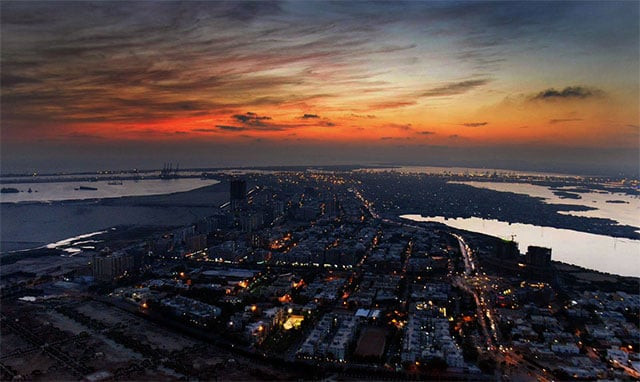
Amid the depressed prices of commodities and the plight of farmers in the country, which was made worse by floods and natural disasters, the agriculture sector has been ignored. The Rs341 billion Kisan package has yet to show any results and is a product of misdirected aims that serve a political agenda more than they do an economic one. Cotton production continues to fall and imports have become a necessity. High tariff rates and duties have taken a toll on the cost of doing business — through higher input costs — and high internal tax rates have shaved off a significant portion of business earnings. In such a scenario, where the government cuts back on its spending as well, achieving a 5.5 per cent growth target was always an improbable task.
In its first three budgets, the PML-N has resorted to strategies that have increased tax collection in almost all sectors of the economy. The savings that businesses may have made through falling oil prices have been offset by higher tax rates, meaning that an expansion was never really on the cards since market talk suggests the crude oil supply glut would end. The one thing Pakistan has achieved — and well — is that it has used its savings in countering security challenges. The imposition of the ‘super tax’ and higher revenue has aided it in spending the money on fighting security threats — a much-needed development since that was the biggest hurdle to the economy’s progress towards growth. The power crisis — the second biggest hindrance — has been tackled to an extent, but we have still not seen an appreciable difference in this regard. How does the government expect to meet its growth target when the cost of doing business and the power crisis still remain challenges? High tax rates have, instead, encouraged the informal economy and helped the flourishing businesses of smugglers. The segments of the formal economy that have performed have been taxed heavily. On the other hand, development seems to be restricted to one province and even there projects have not really aided job growth. State-owned enterprises continue to bleed and get bailouts, while profitable businesses have been forced to contribute more in tax revenue. Distinction between filers and non-filers of tax returns has been made clearer, but that hasn’t really helped in the number of filers going up.
Economic policies are political — to argue otherwise is either naive or indicates a lack of understanding of the game. Yes, it is a game. The PML-N’s strategy has, so far, been pretty clear — falling oil prices will take care of the macroeconomic indicators, while the government cuts back on spending wherever it can since there is a budget deficit. This is how the PML-N’s economic managers have played the game. But this is not how you spur an economy into action that is still reeling from low confidence, red tape, corruption and is up against a government whose policies are inconsistent. Businesses operate successfully when they are incentivised. In the last three years that hasn’t really happened. Metro buses, taxi schemes and flyovers look good, but they do not necessarily generate jobs and invite investment that spurs growth. But these may win votes. And that explains the aim of the government’s economic strategy of the past three years.
Published in The Express Tribune, May 25th, 2016.
Like Opinion & Editorial on Facebook, follow @ETOpEd on Twitter to receive all updates on all our daily pieces.













COMMENTS
Comments are moderated and generally will be posted if they are on-topic and not abusive.
For more information, please see our Comments FAQ